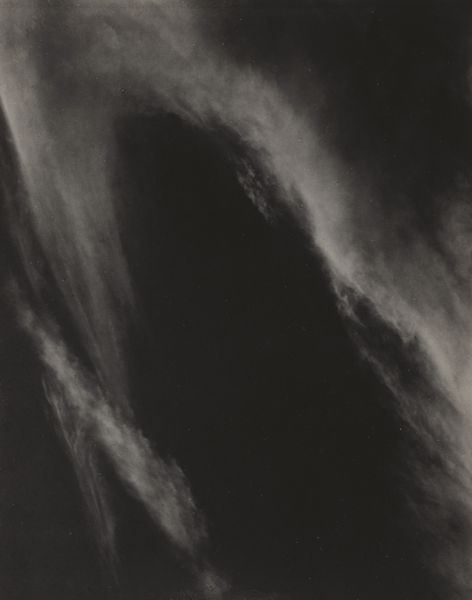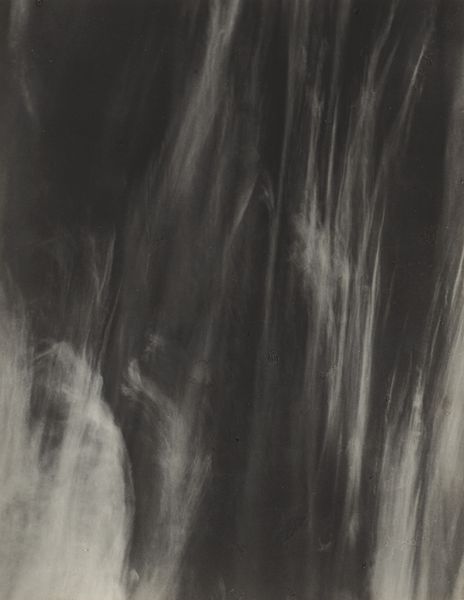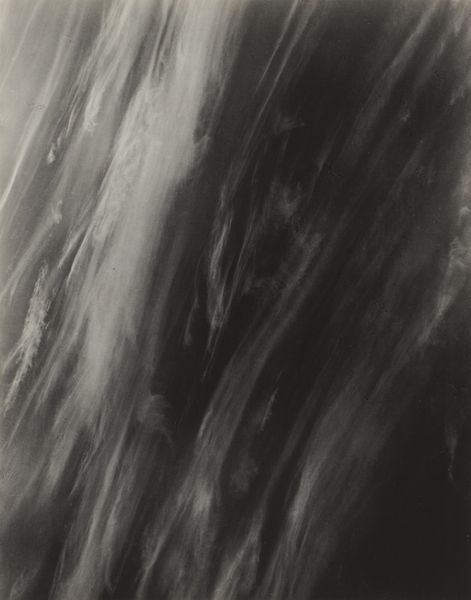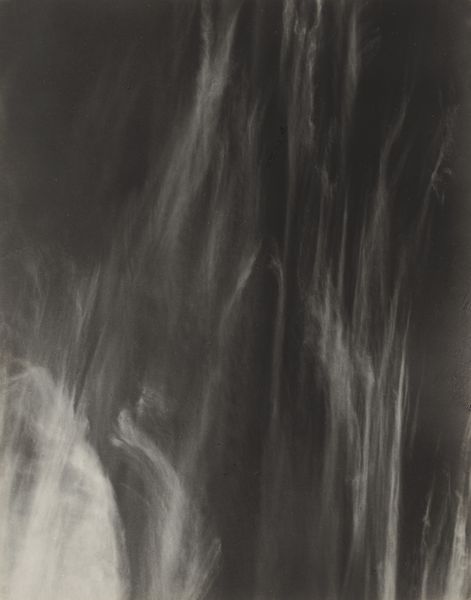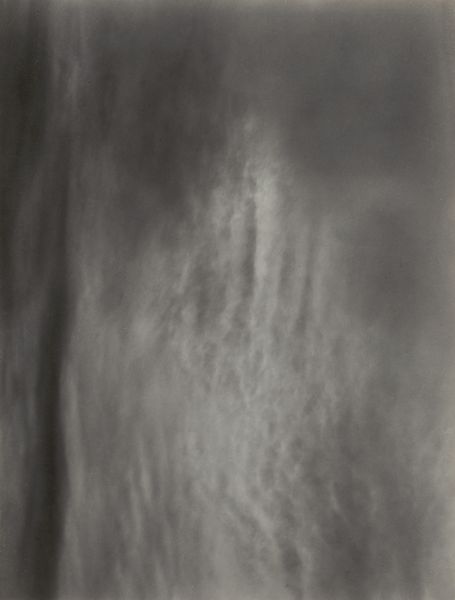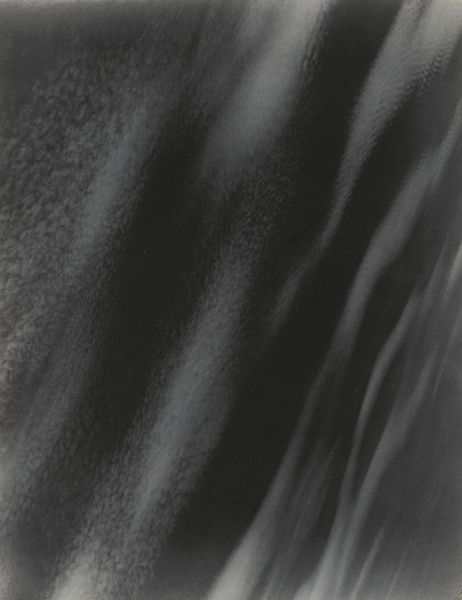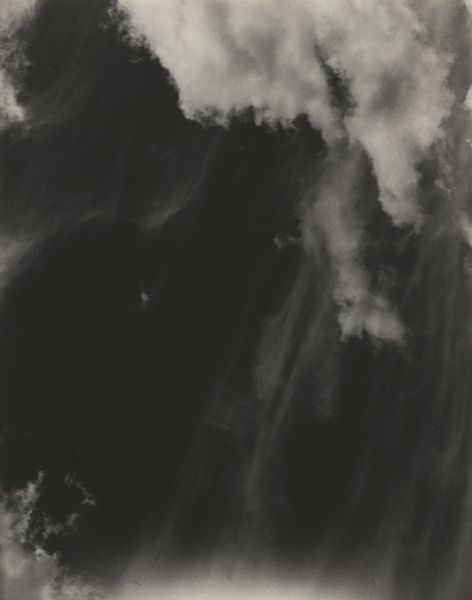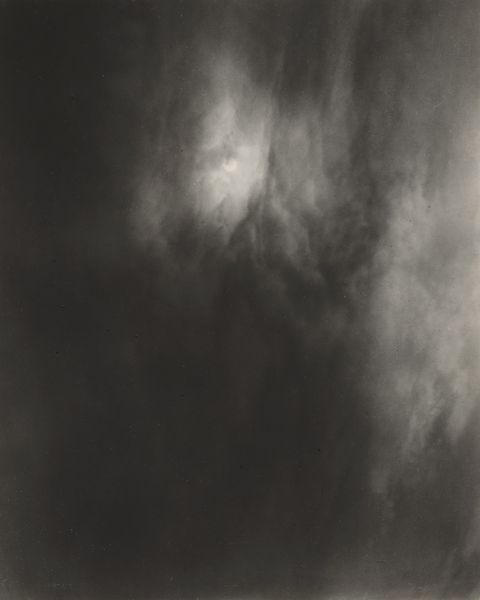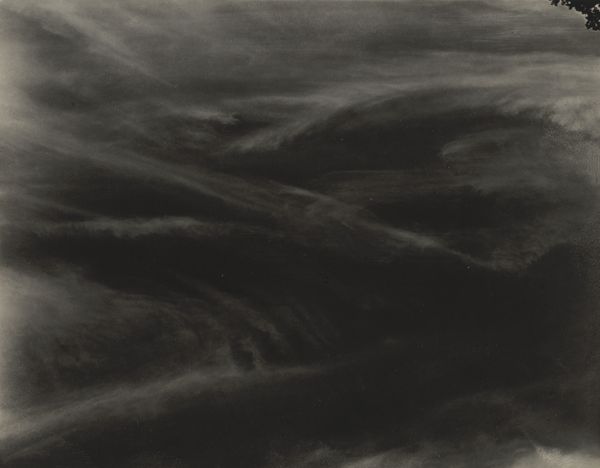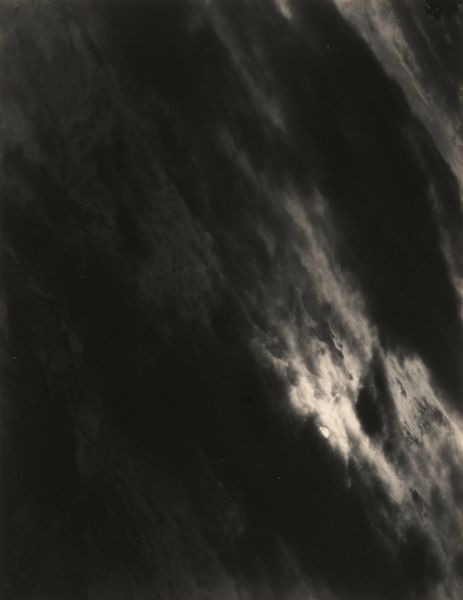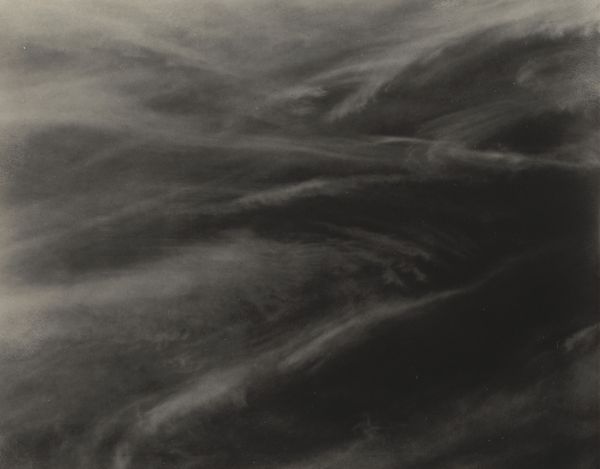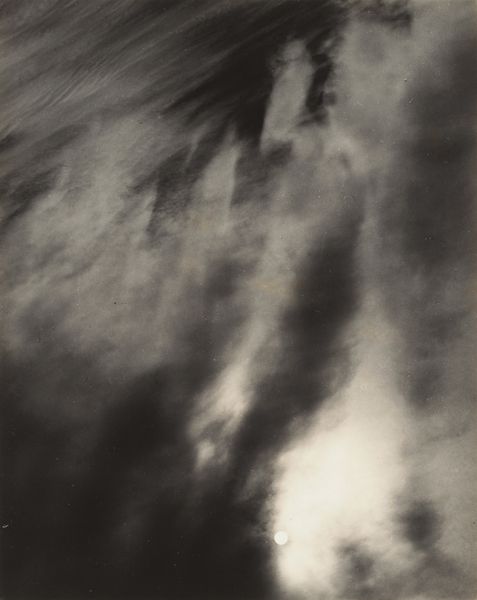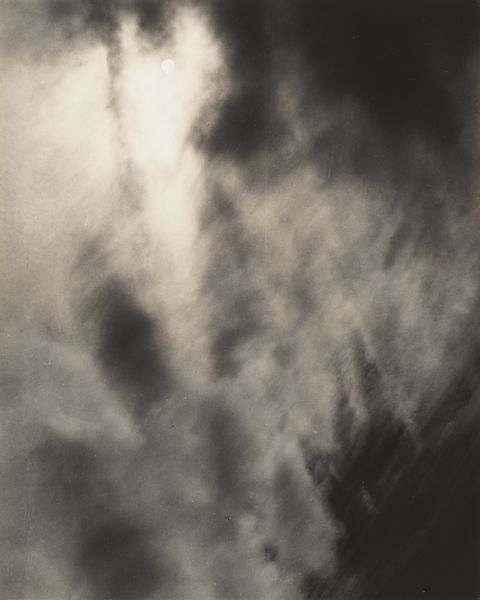
photography, gelatin-silver-print
#
pictorialism
#
landscape
#
photography
#
gelatin-silver-print
#
monochrome photography
#
abstraction
#
modernism
Dimensions: sheet (trimmed to image): 11.9 x 9.2 cm (4 11/16 x 3 5/8 in.) mount: 34.3 x 27.2 cm (13 1/2 x 10 11/16 in.)
Copyright: National Gallery of Art: CC0 1.0
Curator: So, what's your initial take on this gelatin silver print, "Equivalent", made by Alfred Stieglitz in 1927? Editor: Well, formally speaking, it's quite striking. The composition—those ethereal, cloud-like forms in shades of gray—creates a mesmerizing interplay of light and shadow. It's almost like looking at an abstract painting, despite being a photograph. Curator: Absolutely, and it's critical to consider Stieglitz's agenda. During the Pictorialist movement, photography strived to gain artistic merit comparable to painting, sculpture or architecture by focusing on manipulating the materials to conceal its inherent mechanical process. "Equivalents" as a series sought to depict emotions, experiences, and ideas by rendering a section of the sky. Editor: That’s an important point. So, we’re not just looking at clouds; we're invited to read the forms symbolically. What could Stieglitz have been aiming to convey? Curator: Stieglitz deliberately chose a common scene, available to anyone. To generate these striking photographs, though, Stieglitz selected this perspective, adjusted the camera, timed his exposure, and developed the print to highlight the formalist qualities—the shapes, contrasts, and tonality that render a specific emotion that is entirely his own, thus staking claim to authorship. Editor: It seems that the interplay of these swirling tones has been manipulated to an atmospheric, if somber effect, further emphasizing Stieglitz’s state of mind. It's incredibly effective. One can almost sense a spiritual dimension through these natural forms. Curator: These photos reflect the broader shift from manual darkroom interventions used within Pictorialism, towards modernism which used photography for precision and the idea that subject matter alone was inadequate to achieve art; you also needed careful presentation and handling of materials! The clouds stand as a symbol of human emotion in art more than the landscape itself. Editor: Considering the era, one sees not just a photograph of clouds, but an exploration of abstract forms in black and white that seeks to transcend the representational nature of the medium. That really does bring out an emotive tone that stays with you. Curator: Exactly, so it becomes this intersection where labor, materiality, and artistry converge. I think this piece is still powerful precisely because of that tension. Editor: It certainly offers a great deal to reflect on. Thank you.
Comments
No comments
Be the first to comment and join the conversation on the ultimate creative platform.
